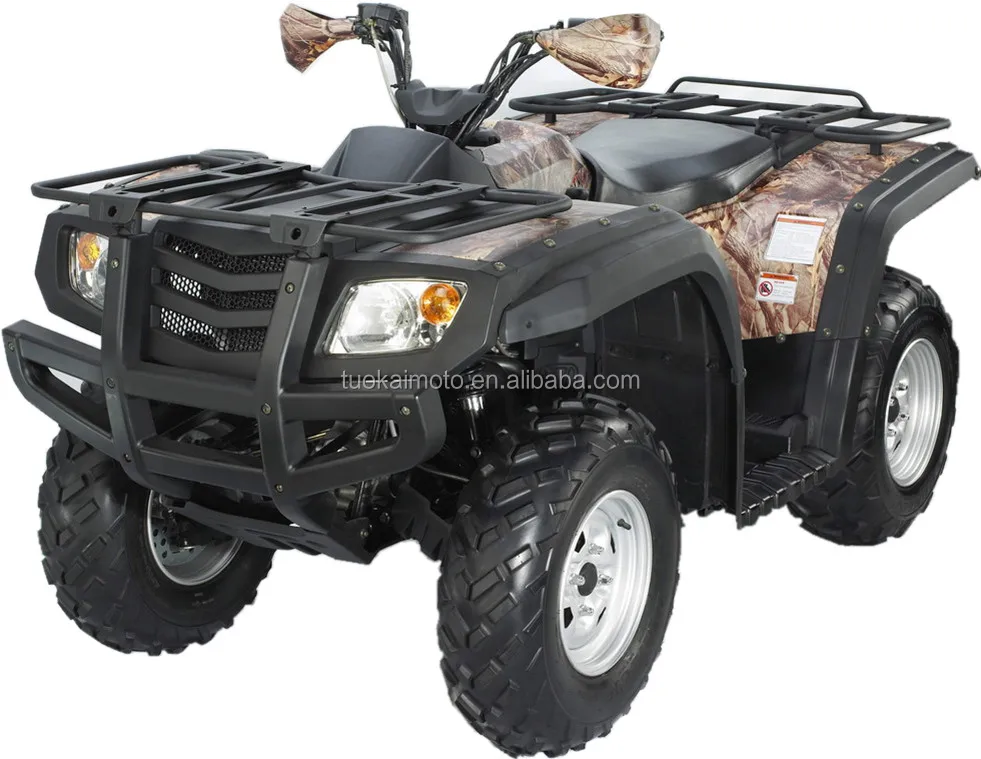Table of Contents
And the answer to that question is that most 700cc ATVs top speed is between 55-90 MPH. We are talking about the average model. This can be between 200cc and 700cc.
For models without a lot of displacement the top speed is about 50 MPH. For quads with bigger engines it’s about 80 to 90 MPH. now if you go to extremes obviously you are going to find bigger speeds.
The Yamaha Banshee is a very powerful quad with top speeds over 100 MPH! And some mini-atvs made for kids are very underpowered, often not being able to go past 30MPH. So as you see, there is a lot of different ranges, but for your average quad it’s going to be about 70 MPH more or less.
How fast can an ATV Bike Go? Some bikes come with adjustable limiters so that speed can be increased gradually by the parent as the riders riding skills and experience increases. Most of the smaller sized ATVs are actually capable of speeds in the range of 30 mph with some light tuning, removing of speed limiters etc.
How fast are quads? 45 MPH was considered a pretty fast top speed and most quads. topped at about 35 MPH. technology wasn’t as advanced as today and that also influenced the performance. of the oldies. older ATVs used carburators and that affected the performance of the machines.
What is the top speed of an ATV? And the answer to that question is that most ATVs top speed is between 55-90 MPH. We are talking about the average model.
This can be between 200cc and 700cc. For models without a lot of displacement the top speed is about 50 MPH. For quads with bigger engines it’s about 80 to 90 MPH. now if you go to extremes obviously you are going…
How fast is Polaris RZR? Polaris RZR 800: 60 mph (97 km/h) Polaris RZR is one of the most popular UTV you can get in the market; you can expect a top speed of 60 mph (97km/h). The Polaris has a very sporty front end and has an overall stylish design.
20mph
In an all-out drag race, the biggerbore Raptor 700 is faster. The quicker revving YFZ-R will get out of the hole quicker, but the massive torque and taller gearing of the 700 will slowly walk away from the race-ready 450. When it comes to climbing the biggest hills, the Raptor offers a similar advantage.
The quicker revving YFZ-R will get out of the hole quicker, but the massive torque and taller gearing of the 700 will slowly walk away from the race-ready 450. When it comes to climbing the biggest hills, the Raptor offers a similar advantage.
The world record for the fastest speed on an ATV was recorded in 2008 by Terry Wilmeth of Oregon. He reached his top speed of 196.19 miles per hour on a Yamaha 700 Raptor, which was modified using a hybrid rocket thruster.
– Arctic Cat Thundercat 1000.
– Can Am Outlander X XC 1000.
– Suzuki LT500 (quadzilla)
– Yamaha Raptor 700R.
– Honda TRX 700xx.
– Bombardier DS650.
– KTM 525 XC.
– Yamaha YZF 450R.
How fast can the 125cc ATV go? My Apollo 9 125cc atv went 37 mph and that was just stock.
cc ATV Side by Side
— —— ————
500 60 MPH 45 MPH
570 65 MPH 45 MPH
650 70 MPH –
800 75 MPH 60 MPH
we are talking about the average model.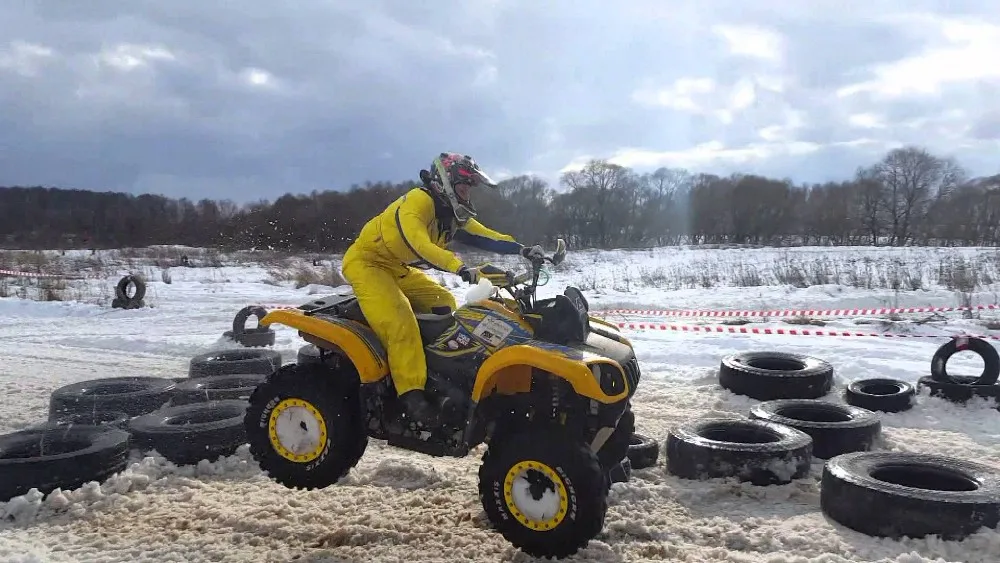 this can be between 200cc and 700cc. for models without a lot of displacement the top speed is about 50 MPH. for quads with bigger engines it’s about 80 to 90 MPH.
this can be between 200cc and 700cc. for models without a lot of displacement the top speed is about 50 MPH. for quads with bigger engines it’s about 80 to 90 MPH.
Starting at $2,099, the ATV is designed to get youth comfortable with driving their first vehicle. An engine ranging from 70 cc. to 112 cc. Fits well for kids ages 10 and older.
Compared with the smaller engines, these ATVs allow older youth more power without becoming bored on a low-powered engine.
Age of Operator ATV Engine Size
——————– —————
Under 6 years of age not recommended
Age 6-11 Under 70cc
Age 12-15 70-90cc
16 years and older Over 90cc
Displacement: 125cc, 4 Stroke
————- ——————————————–
Top Speed: Up to 40 MPH (adjustable by using Regulator)
Frame: High Strength Steel
Some of the most powerful ATVs may reach top speeds of about 80 miles per hour, but the average is more like 50 to 60 miles per hour. A lot of factors go into how fast a quad can go apart from the engine.
A lot of factors go into how fast a quad can go apart from the engine.
Today’s most powerful sports and utility ATVs can reach top speeds of 80mph (128km/h). Moderate sized bikes averages at about 65 mph (104km/h). Youth ATVs have speed limiters so that the parent can decide exactly how fast it can go.
cc ATV Side by Side
—- —— ————
650 70 MPH –
800 75 MPH 60 MPH
850 75 MPH –
1000 80 MPH 80 MPH
Today’s most powerful sports and utility ATVs can reach top speeds of 80mph (128km/h). Moderate sized bikes averages at about 65 mph (104km/h).
35-40 mph
30 mph
How fast can a 70cc ATV go? Apache offers a 7.1 HP and claims speeds of up to 20mph plus: this is pretty fast for a 70cc ATV. If your kids ride it, make sure they are appropriately wearing the correct safety gear and you are present.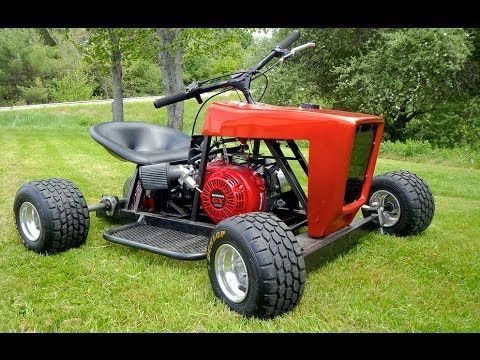
How fast can the 125cc ATV go? My Apollo 9 125cc atv went 37 mph and that was just stock.
The Fastest ATV Ever Clocked in Just Under 200 MPH
Top Speed of ATVs and UTVs
Top Speed of ATVs and UTVs
How Fast Can ATVs Go? (Different CC Engines Compared)
<a href=”#top”>Back to top of page</a>
Table of Contents
One of the most famous ATVs in the world is the Yamaha Raptor 4-wheeler. Its a well-know and well-appreciated quad with an impressive top speed. Some people will debate this topic, but if you ask most people – they have heard of the Yamaha Raptor. I asked all the people on my shift at work and over half of them knew what the Raptor was and had never even ridden an ATV.
The Yamaha Raptor has a factory top speed of around 75 mph on off road tires for most model years. Some heavily modified Raptors have been clocked in excess of 90 mph.
The Yamaha Raptor 700 has been around for almost 15 years and is on of the only 2 models of sport ATV being manufactured at this time. Yamaha is still making advances and making sure to be the top of the sport ATV game if other companies decide it’s time to jump back into the ATV market. Let’s see where the Raptor four wheeler first got its start.
The Raptor is a very popular 4 wheeler model because of it’s large engine displacement. When Yamaha created the Raptor in 2001, it was the 660R and it boasted the largest production engine to ever be placed in a sport ATV and was the first to have a 5 valve cylinder head in the entire history of ATVs.
Yamaha set the new benchmark when they released this new ATV. The outstanding engine along with its YZ-spec, 5-speed manual transmission, state-of-the-art chassis, and race-honed suspension helped the Raptor win the title of “Sport ATV of the Year”.
2006 saw the introduction of the Raptor 700. A 686cc Yamaha engine made this the most powerful outdoor ATV ever, with lots of torque right out the gate the led into a powerful mid range and monstrous top end power.
The Raptor 700R was the first ever fuel injected outdoor ATVAs the first fuel injected outdoor ATV and provides crisp, consistent engine performance in a wide range of conditions, regardless of elevation or temperature. No messing with jets on a carburetor on this quad!
The Raptor 700 featured a steel and aluminum hybrid frame with aluminum subframe and cast swingarm. This was another first for Yamaha which meant the Raptor 700R boasted a class leading chassis and is the lightest ATV in its class and Yamaha has been innovating ever since.
| Engine | |
| Type | 686cc liquid-cooled with fan, four-stroke; SOHC, four valves |
| Bore x Stroke | 102.0mm x 84mm |
| Compression Ratio | 10. 0:1 0:1 |
| Fuel Delivery | Yamaha fuel injection, 45mm |
| Ignition System | 32 Bit ECU |
| Starting System | Electric Starter |
| Transmission | Five-speed with a single-speed reverse; wet multiplate clutch |
| Drive Train | 2WD; sealed O-ring chain, eccentric adjustment |
| Chassis | |
| Front Suspension | Independent double wishbone w/piggy back high-lo-speed compression, rebound and threaded preload adjustment, 9.1-in travel |
| Rear Suspension | Cast aluminum swing arm w/rebound, high-lo-speed compression and threaded preload adjustment, 10.1-in travel |
| Front Brakes | Dual ventilated hydraulic discs, twin pistons |
| Rear Brakes | Ventilated hydraulic discs, self-adjusting park brake function |
| Front Tires | Maxxis AT22 x 7-10 radial |
| Rear Tires | Maxxis AT20 x 10-9 radial |
| Dimensions | |
| L x W x H | 72.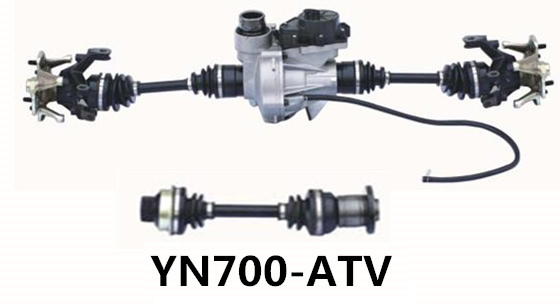 6 x 46.5 x 43.9 inches 6 x 46.5 x 43.9 inches |
| Seat Height | 32.7 inches |
| Wheelbase | 50.4 inches |
| Ground Clearance | 4.4 inches |
| Fuel Capacity | 2.9 Gallons US |
| Wet Weight | 422 Pounds |
There are many different years and models of the Raptor 700 and they include the original Raptor 700R that was released in 2006 did not have any other model denotations and came in one style.
The Raptor 700 (without the R), Raptor 700R, and Raptor 700 SE have been released together in several years and really only denote trim levels and minor shock upgrades like reservoir shocks. It is like buying a car with different trim levels for the same vehicle.
It is like buying a car with different trim levels for the same vehicle.
There is a lot of debate about the Yamaha Raptor 700 top speed to be found online and I can’t seem to find a direct answer from Yamaha but from user testing, depending on weather conditions and road conditions, people are seeing 74-75 mph for most years and models.
For most riders this is plenty of speed and for trails, you will never get this fast, so worrying about top speed shouldn’t be an issue.
The Raptor 700R is Yamaha’s second generation of the Raptor (first gen being the Raptor 660) and is powered by a 686cc single cylinder four-valve electronically fuel injected engine. This larger engine produces approximately 47 horsepower.
This may not seem like a lot when compared to the larger 1000cc 4WD ATVs that are producing almost double power at 91 horsepower. The thing about the raptor is how it is geared and how it is driven. It has a 5 speed manual transmission that allows the rider to seamlessly switch gears and rise all the way through the powerband.
It has a 5 speed manual transmission that allows the rider to seamlessly switch gears and rise all the way through the powerband.
The larger ATVs like the Can Am Renegade 1000 are generally much heavier. The dry weight of the Can-Am is 850 pounds which is just over double that of the Raptor 700s wet weight. (Wet weight is the weight of the ATV with all of the fuel, oil, and other fluids topped up in the machine)
This light weight, manual clutch driven ATV has a good power to weight ratio and allows it to keep up with higher power engines.
The Raptor 700 quad has a short wheelbase and a lot of torque allowing it to raise the front end up with little effort, sometimes without you even trying to do it. Having that type of low-end power makes it easier to ride through rough sections like whoops.
The Big 3 are the first three modifications that most people will do to their Raptors see significant improvements in their power and not break the bank by going all out and spending a ton of money. The Big 3 aren’t necessarily cheap when you do them all but they will give you the most power with minimalish work. If you want a more detailed list of the modifications you can put on your ATV to keep you ahead of the pack, check out this article I wrote!
The Big 3 aren’t necessarily cheap when you do them all but they will give you the most power with minimalish work. If you want a more detailed list of the modifications you can put on your ATV to keep you ahead of the pack, check out this article I wrote!
Your Raptor’s engine is like a living breathing creature. It takes air into the engine through the air intake filter. The more air the is pulled in, the more it mixes with the fuel pulled into the cylinders, making more combustion and more power.
You can buy performance filters that will allow more air in and are also reusable for around $50. Some companies also offer a fully enclosed cold air intake system that is a little more expensive.
If your ATV is breathing in, it has to breathe out! An optimized performance exhaust system will be able to efficiently get rid of the extra combustion gasses from the engine. This will keep you from getting a bunch of extra backpressure and will help stop you from losing horsepower.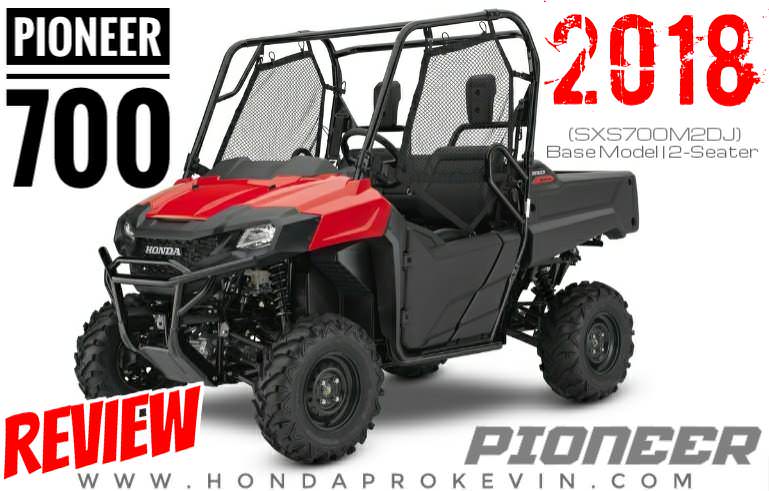
You can opt for just upgrading your pipe, by adding a slip-on. Yoshimura is a well known and quality company in the ATV world and they make great products. This is the most cost efficient and will help reduce weight and increase the horsepower. You can install a slip-on with no mechanical knowledge necessary. All you need is a few generic tools to pop the stock pipe off and get the new one on.
The next, and more expensive option, is to get a full exhaust system put on your Raptor like this Big Gun dual exhaust. A full exhaust system replaces everything from your header to your exhaust pipe. This is the best option if you want to get the most performance gains out of your machine.
A full exhaust significantly reduces weight and improves performance. In order to install this you may want to seek a professional’s help, unless you already have experience with this kind of work or modification.
A fuel controller optimizes proper air to fuel mixture ratios to increase performance gains and efficiently burn the gasses to maximize combustion.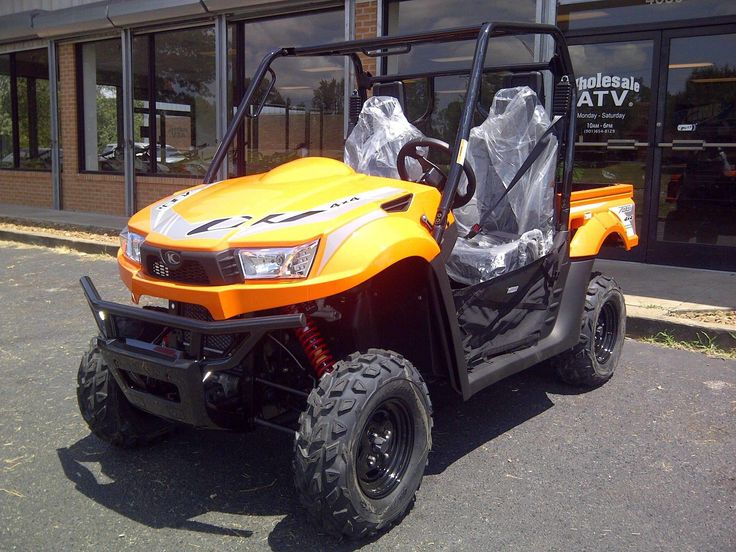
Most are a simple plug-n-play installation and are already set from the factory for your machine. They are super customizable to match the modifications you have installed
Set from the factory with proven settings, but can be easily user-customized to match your specific modifications.
The highest speed ever achieved on an ATV, according to the Guinness Book of World Records was 196.19 mph or 315.74 km/h. In 2008 Terry Wilmeth (USA) broke the previous world record of 164 mph that he set himself in 2007. Terry has always piloted Raptor 700s and built a killer rocket to demolish his old record. He piloted his ALSR Rocket Raptor version 6.0, which was a modified Yamaha 700 Raptor quad that was augmented with a hybrid rocket thruster.
His record was set at the Madras Airport, Madras, Oregon, USA, on 15 June 2008 and is still holding strong today. The speed was the average of 2 runs in opposite directions.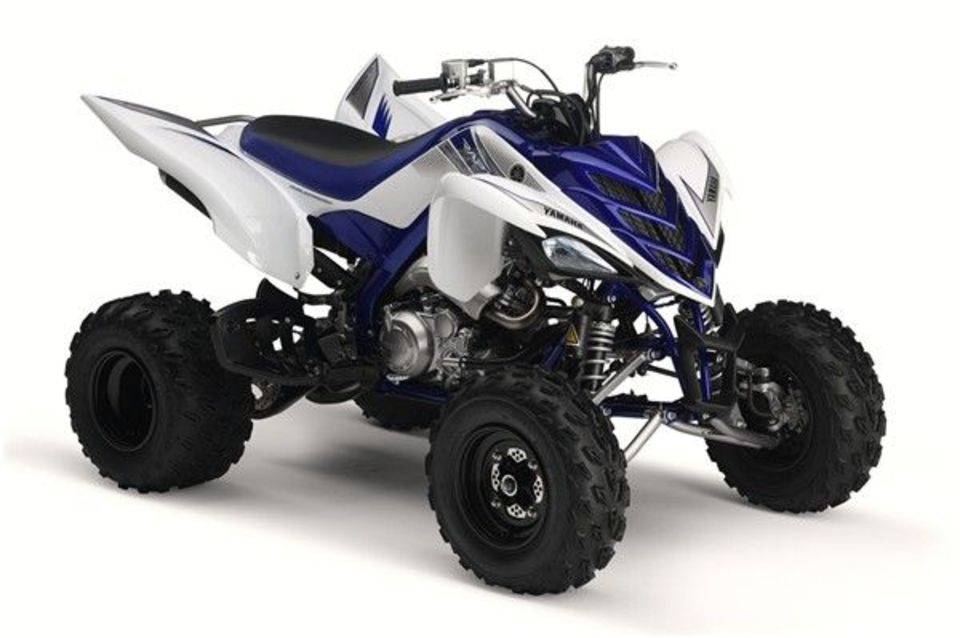
Terry had one goal, to set the bar for top speed on an ATV as high as possible with at least 200 mph sustained speed and then retire. He didn’t quite make his goal. There is an HD documentary on Terry Wilmeth. Watch him attempt to break 200 mph on his rocket propelled, nitrous fueled, turbo powered ATV. It covers his past attempts and the trials and challenges of setting his new record.
Again, this is not one of those numbers that is commonly given out by Yamaha but many drivers have said they get from 70-73 mph on their stock Raptor 660. These speeds are determined by the driver and the conditions of the road and the weather conditions just like with the Raptor 700.
The Raptor four wheeler is only one of 2 sport ATVs left in the game and you can see why. They perform well, have a great company backing them, and are easy to modify for more power. My next ATV will be a Yamaha Raptor 700.
The popularity of motorcycles is growing every year, and this is because people are discovering new and new ways to use it.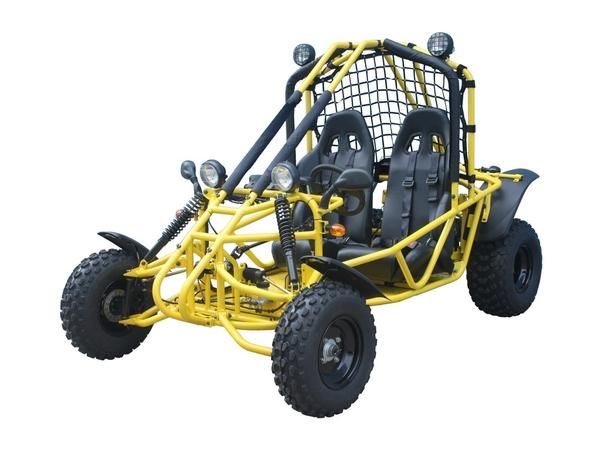 So, they usually decide to buy an ATV in order to easily overcome almost impassable roads. And then options are already possible, because modern models are distinguished by endurance, thoughtful comfort, and maneuverability. They are adapted for various needs: transportation of household goods, fishing and hunting trips, long and distant travels and, of course, entertainment and sports competitions.
So, they usually decide to buy an ATV in order to easily overcome almost impassable roads. And then options are already possible, because modern models are distinguished by endurance, thoughtful comfort, and maneuverability. They are adapted for various needs: transportation of household goods, fishing and hunting trips, long and distant travels and, of course, entertainment and sports competitions.
For all their merits, ATVs do not belong to the high-speed mode of transport. But given their key mission, they don’t need this, because indicators such as power, cross-country ability, and safety level are much more important. And yet, which model to choose if you want to be smarter? And in what cases is this parameter really relevant? Experts of the Sport-Extreme Motorcycle Center will tell about this.
Models of modern "ATVs" differ in design in order to better meet certain operating tasks. The differences between the types of ATVs relate, among other things, to the speed parameters that motor vehicles are capable of developing.
The most versatile and therefore popular type of ATV, which is ideal for driving on country roads and off-road, forests, marshy and rough terrain, mud and sand, primer. The maximum developed speed of utilitarians reaches 75 km/h or more, but in most difficult areas you will not need more than 20-40 km/h. An excellent choice for those who spend the season in the country or prefer to go hunting, fishing, or on a motorcycle trip.
Utility vehicles are equipped with powerful engines, good suspension, and high ground clearance. For better grip on the road, such ATV equipment is equipped with deep-tread rubber, and the wheels themselves have wide tires. This allows you to provide the best possible grip on the ground, which is not stable outside the city.
Such models are designed for operation in a flat highway, and here it is quite possible to travel at a high speed compared to other types of quadrics.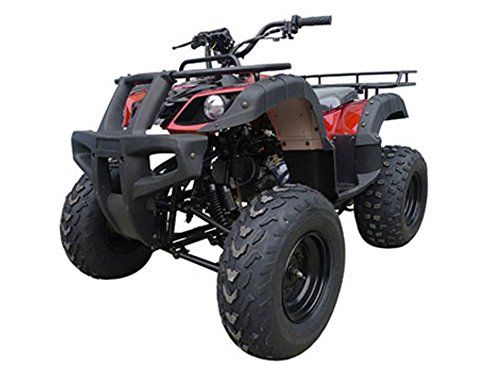 The possibilities of urban versions in this regard reach 80 - 95 km / h. And this is comparable to the cruising speed of a passenger car.
The possibilities of urban versions in this regard reach 80 - 95 km / h. And this is comparable to the cruising speed of a passenger car.
These speed capabilities are affected by a number of design and technical characteristics. In particular, highway motorcycles have low ground clearance, narrower tires and not as deep a tread as utility models, respectively, a completely different area of contact with the road surface. So when choosing such a model, it should be borne in mind that even light off-road conditions will be a test for it.
Such models are capable of accelerating up to 120 - 130 km / h (for example, Yamaha YFM 700 R / SE). This is facilitated by the lightweight design of the device and compact dimensions, because this technique is designed to perform jumps and other tricks. The fuel tank is small compared to utility and road ATVs, and the engine is medium in volume, which allows you to give the equipment a short-term load for acceleration and leaving the springboard.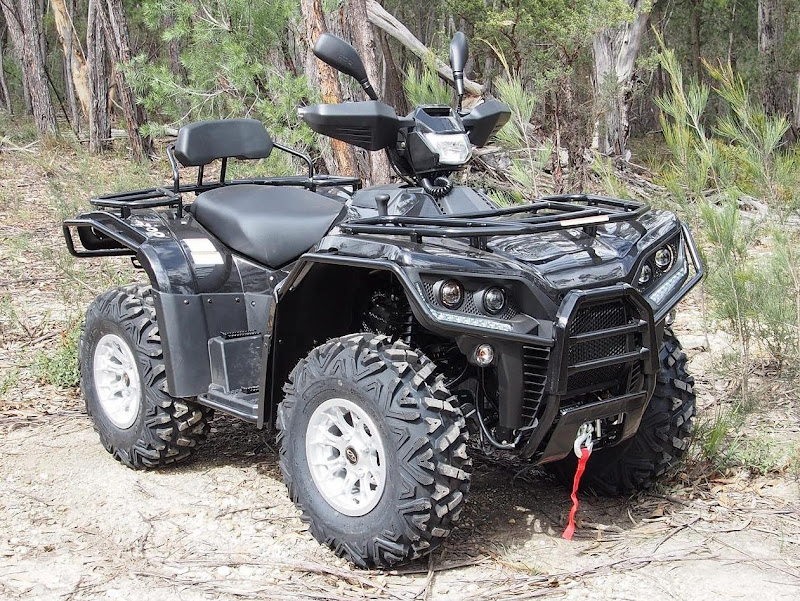
For the safety of young drivers on these models, the speedometer will not show more than 45 km/h. But this will be quite enough to drive through the fields and rural roads, forest parks and spacious courtyards with comfort, pleasure and for the benefit of the peace of mind of parents, naturally, away from the roadway and under the supervision of adults.
In addition, many models are equipped with a remote engine shutdown system. Children's models are designed for the age of 6 - 12 years and are able to withstand a child or teenager weighing, as a rule, up to 55 kg.
In the catalog of the "Sport-Extreme" center you will find motor all-terrain vehicles for any purpose. The website of the online store presents a wide range of ATVs from trusted manufacturers:
Delivery across Russia by transport companies.

models suitable for your goals and expectations.
For a detailed consultation on availability, prices and features, just call +7 (4822) 65-65-03.
Published by: motocafe.ru dated
This Grizzly 700 was purchased as a "carriage horse" for our company's motorcycle trips. But very soon it was transferred to the category of "horses" for weekend raids: it brings the pleasure of piloting no less than the benefit of transporting goods.
For almost a year, the horse was mercilessly chased in the tail and mane in conditions that children under the age of sixteen are better off not knowing about. I rolled over on it, crossed streams and swamps, repeatedly rammed trees and even cut through the asphalt on punctured wheels.
The "700th" engine is injection, thanks to which it starts easily and naturally in any frost and, which is important for those who like to climb ruts, at any slope. The engine power is always enough and everywhere: in the sticky mud of swamps, and on long climbs, and when traversing the steppe. The maximum speed that I managed to develop is 120 km / h! In my opinion, for a utilitarian ATV - more than worthy. However, it goes fast, but “eats” a lot. For example, in the steppe, with the front drive turned off, a 20-liter tank was enough for 100-120 kilometers, and when climbing “in tightness” through the swamps, for 70-80 kilometers. In order not to rush about long distances through forests or steppes in a deliberately futile search for a gas station, I purchased a “warehouse for storing fuel and lubricants” - two wardrobe trunks: in the back (actually it is intended for camping and tourist rubbish) I shoved several canisters of fuel, while in the front one they are regularly located two canisters of six liters each... The closed quadra compartments provided by the manufacturer are almost airtight and are quite suitable for storing especially valuable things on a hike.
The engine power is always enough and everywhere: in the sticky mud of swamps, and on long climbs, and when traversing the steppe. The maximum speed that I managed to develop is 120 km / h! In my opinion, for a utilitarian ATV - more than worthy. However, it goes fast, but “eats” a lot. For example, in the steppe, with the front drive turned off, a 20-liter tank was enough for 100-120 kilometers, and when climbing “in tightness” through the swamps, for 70-80 kilometers. In order not to rush about long distances through forests or steppes in a deliberately futile search for a gas station, I purchased a “warehouse for storing fuel and lubricants” - two wardrobe trunks: in the back (actually it is intended for camping and tourist rubbish) I shoved several canisters of fuel, while in the front one they are regularly located two canisters of six liters each... The closed quadra compartments provided by the manufacturer are almost airtight and are quite suitable for storing especially valuable things on a hike.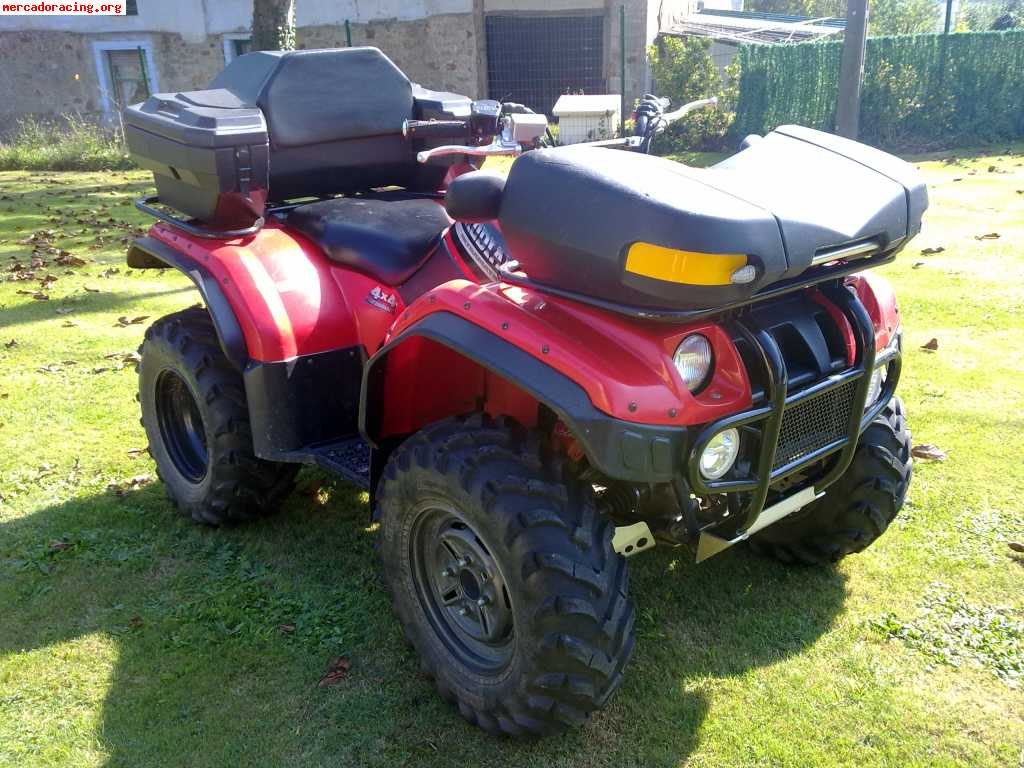 The small one fits a phone and a camera - a “soap box”.
The small one fits a phone and a camera - a “soap box”.
A raid through the forests around Onega showed that the "bear" (though not without our help) was also swimming. Having drowned out and completely unloaded the quadric, we put on the fishing "teletubbies" and dragged it on our hands through a one and a half meter ford. A lot of internal cavities, which turned into floats, kept the heavy (274 kg, after all!) ATV afloat. It passed through fords up to 80 centimeters deep under its own power and did not choke - thanks to a highly located air intake. With its regular low-pressure tires deflated almost to zero, in the Onega swamps, the Grizzly 700 drove confidently where people could hardly walk.
With its regular low-pressure tires deflated almost to zero, in the Onega swamps, the Grizzly 700 drove confidently where people could hardly walk.
In the same raid, it turned out that our four-wheeled vehicle is not as confident as real bears are wading through the undergrowth. The bumper fails: it is almost fake, and the head optics and plastic are fixed on it. After the first attempt to rest against a tree with the limber in order to crush it, the bumper slanted, and the headlights began to shine into the sky. But turning them in the right direction is not so easy: all the elements of the plastic lining are connected to each other, and the displacement of one of them entails a bunch of inconsistencies with others. In addition, the plastic on the "seven hundred" is very thin and cracks easily ... But you have to drive through the undergrowth! Ingenuity helped: we just tied a small log to the bumper - and the “wooden kenguryatnik” is ready!
They also discovered that "bears" can fly.